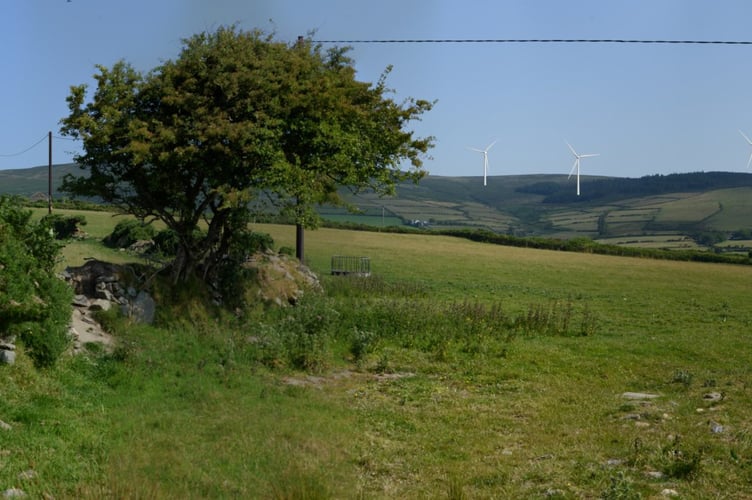The chairman of Manx Utilities has said that the southern proposed windfarm site would be cheaper, generate more electricity and has better existing infrastructure.
Earlier this year, Manx Utilities announced its plans for a windfarm which would generate up to 30% of the island’s energy.
Two sites have been identified as potentially suitable for the windfarm - Sulby and Druidale in the north and Earystane and Scard in the south of the island.
When the plans were announced, the authority’s chairman Tim Crookall said that while Sulby would generate enough energy to power 21,000 homes, Earystane could meet a third of island ‘s annual demand.
Now in a number of published written responses, Mr Crookall, who was asked numerous questions on the chosen sites by Arbory, Castletown and Malew MHK, Jason Moorhouse, has said that the southern site would be cheaper, and that fewer changes would need to be made to the existing infrastructure at the site.
In a written response he said: ‘Earystane has reasonable access to the 33kV transmission network where it can accommodate 20MW onshore wind in all fault scenarios.
‘The road infrastructure around the site already enables access to the site without significant modifications required. Sulby also has access to the transmission network and reasonably good road access.
‘However, the road would require modifications.
‘The more significant road modifications are reflected in the higher cost of the Sulby site.’
He added: ‘As we have not identified viable alternatives (upland areas with access to good wind resource, the network and not close to highly populated areas) we do not have a cost comparison’
Mr Crookall said that there are no plans at this point to install wind turbines within 500m of any dwelling.
The exact locations of turbines will be defined in the design stage which compliments the Environmental Impact Assessment, according to Mr Crookall. In a separate written response Mr Crookall said: ‘Storage capacity is not required as the windfarm capacity is lower than the minimum demand on island.
‘It is envisaged that all power generated from the windfarm will be utilised as it is generated; there may be small periods of time where the potential output cannot be utilised due to network maintenance.
‘In addition, the existing interconnector is a high reliability asset which can usually accommodate the failure of other generation assets.’
‘Sites with easier access to the grid are more likely to be at lower altitudes and in close proximity to conurbations and these would have been excluded during the selection process.’
But Arboury, Castletown and Malew MHK Mr Moorhouse has voiced his concerns over proposed sites, particularly the prospect of the wind farm being installed in the southern site.
He told the Examiner: ‘A development at the proposed site in the south of the island has the potential to have a major impact on all areas of the constituency of Arbory, Castletown and Malew.
‘I am supportive of the use of renewable energy, but I am concerned that at the moment that the MUA are focusing on the wrong locations, a high cost strategy and a very limited timescale.
‘The southern site is surrounded by heathland and a significant earlier planning application stated the plantation should fall into this category.
‘I have asked several related questions about this, because once the MUA accepts the area is heathland this proposal will almost certainly have to be abandoned.’
Yet in a separate written response, Minister for Environment, Food and Agriculture Clare Barber said: ‘The area covered by the Earystane plantation is not classified as heathland because, as with most upland coniferous plantations, it was originally established on previously uncultivated heathland.’
She added: ‘The exclusion of areas of failed forestry from the heathland register was intentional, no such areas are registered and there are no plans to register any further areas in the future.’
Mr Moorhouse said that next month he will be bringing forward a Tynwald motion that would seek to give the island’s highland areas similar protection to the UK’s national parks,
Simarly, Arbory and Rushen Parish Commissioners agreed this month in their meeting that as part of the isle of Man’s Strategic Plan, uplands and glen areas should be recognised as protected national parks.
Mr Moorhouse said that he will also be bringing forward a motion which seeks to ensure that where developments of this type are proposed in the future, local people will be spoken to and actively involved in the process.
He said: ‘One of the key concerns over the last two months is that local people will be responded to when they put in Freedom of Information requests and contact their elected representatives, but otherwise the MUA are not available. This approach has created a lot of upset and frustration in the community.
‘With something of this magnitude, which will cost at least £40 million, and probably a multiple of that, and have a lasting impact on one of the most picturesque areas of the island, it is a real concern.
Mr Crookall said that design work will be undertaken in parallel with the environmental impact assessment, which was set to start in September 2023, and will not be completed until 2025.

.jpeg?width=209&height=140&crop=209:145,smart&quality=75)

.jpeg?width=209&height=140&crop=209:145,smart&quality=75)
.jpg?width=209&height=140&crop=209:145,smart&quality=75)
Comments
This article has no comments yet. Be the first to leave a comment.